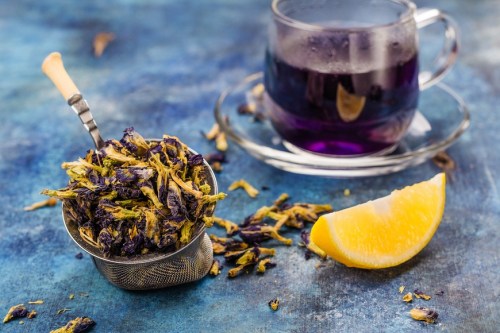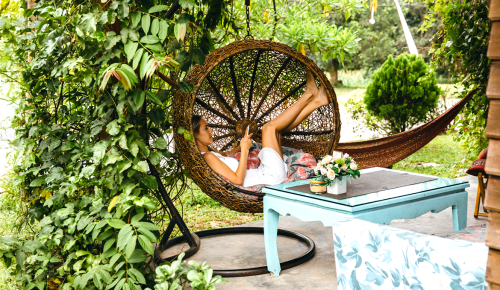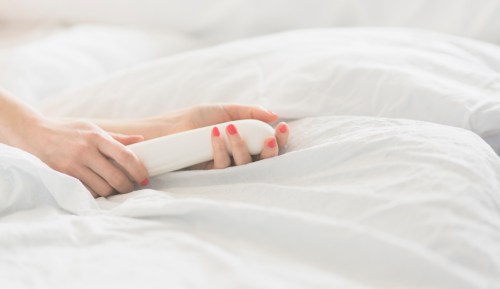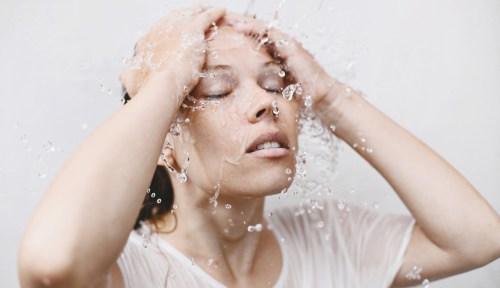Our editors independently select these products. Making a purchase through our links may earn Well+Good a commission
You’d be hard-pressed to find a prettier ingredient than butterfly pea flower, a plant native to South Asian countries like Thailand and Malaysia. In the wild, it’s a gorgeous, Georgia O’Keefe-style flower (its scientific name is Clitoria ternatea because it looks like that part of anatomy). In drinks, it packs near mystical powers that go beyond simply changing its aesthetic to blue (more on that later). In general, the myriad butterfly pea flower benefits make it worth brewing into a cup of afternoon tea.
Experts in This Article
founder and director of Real Nutrition
registered herbalist, educator, and founder of Supernatural
“This is a beautiful plant with a wide range of uses—from agricultural to medicinal, nutritional and otherwise,” says herbalist and holistic health practitioner (and host of Well+Good’s YouTube series Plant Based) Rachelle Robinett. “Which is, frankly, the case with so many plants in the world. [We’re] only beginning to understand and test or study the active compounds in them.”
To learn more about the various butterfly pea flower benefits, we also spoke with Amy Shapiro, MS, RD, CDN, a registered dietitian and the founder and director of Real Nutrition. Plus, we’ve gathered some of our top favorite products on the market featuring this ingredient, from butterfly pea flower tea to a bottled extract of the herb.
4 impressive butterfly pea flower benefits
1. It’s filled with anti-inflammatory compounds
According to Shapiro, butterfly pea flower is rich in antioxidants, including anthocyanin compounds called ternatins, which give it that gorgeous blue hue. “It’s also a great source of additional antioxidants, including kaempferol, p-coumaric acid, and delphinidin-3,5-glucoside, all of which help to decrease inflammation, prevent infection—it’s antimicrobial and antifungal—and may decrease the growth of cancer cells,” Shapiro says.
Robinett also notes that butterfly pea flower is deeply rich in antioxidants. According to her, that means it can help your body fight back against the damage caused by free radicals, like inflammation and signs of aging in the skin. Robinett notes that the antioxidant anthocyanin is also prevalent in blueberries and red wine, both of which are well-known for fighting inflammation and boosting heart health.
2. It could help with cognitive function
According to Robinett, butterfly pea flower is a natural nootropic, which means that it can potentially help improve cognitive function. One 2015 review found that butterfly pea flower may offer benefits in boosting learning and memory, although more clinical human trials are needed to make this conclusive. Meanwhile, Shapiro points out that it contains acetylcholine, which is one of the best brain-boosting nutrients. “Acetylcholine helps support brain health and function, boost mood, alertness, and mental clarity,” she says.
3. It supports skin and hair health
Research shows that butterfly pea flower can have positive effects on skin and hair health, too. “Due to its powerful antioxidant profile, it has been effective in improving skin and hair texture when used in cosmetics or topical applications,” Shapiro says.
Butterfly pea flower makes sense as a refreshing spa beverage (I was once served a glass following massages in Thailand) because it has bonafide beauty benefits thanks to all of those antioxidants. In fact, some studies have shown it to be a helpful addition in eye wrinkle treatments and in reducing redness and irritation, too.
4. It changes color (in a good way)
Indeed, one of the most intriguing aspects of this ingredient is that it can transform colors in the blink of an eye. On its own, when brewed with plain ol’ water, the flower tea is a deep, dark cobalt-blue shade. However, when you add something acidic, say a squeeze of lemon juice, to a batch of butterfly pea flower tea, it’ll quickly transform into a bright violet-hued drink. What’s at play, you may wonder? Though it may seem like magic, it simply boils down to a little science, aka changes to its pH levels. That’s all.
Aside from loads of entertainment watching the colors transform, butterfly pea flowers can serve other useful and practical functions. The bright hue and versatility make it a great natural food coloring option, Robinett says. “I have to hope we can evolve to using plant compounds as coloring agents rather than chemicals,” she says. “I mean, plants just are unicorn food.”
3 butterfly pea flower products we love
1. Blue Tea Butterfly Pea Flower Pyramid Tea Bags
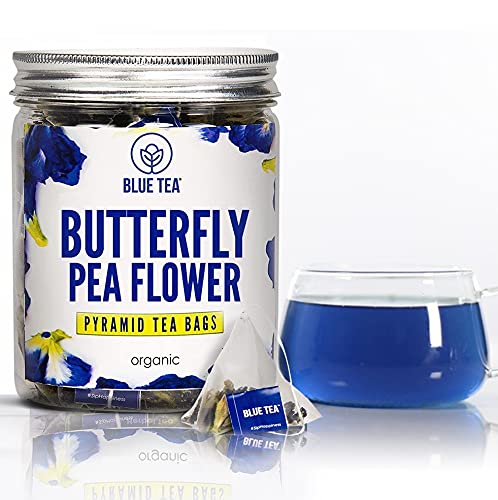
Blue Tea Butterfly Pea Flower Pyramid Tea Bags — $13.00
Blue Tea’s butterfly pea flower pyramid tea bags makes sipping on a beautiful blue drink as easy as possible. This fun and colorful tea comes in individual pyramid-shaped sachets that make brewing a batch of this flower tea mess-free. To use them, pop a bag in a cup of water for one or two minutes and serve hot or cold. What’s more, this ingredient is caffeine free and ideal after you’ve had, say, two or three cups of joe (hello, jitteriness) already in a day. It’s also a great tea to soothe sickness when you’re feeling a bit under the weather and one of the best teas for longevity, too.
2. Incas Organic Butterfly Pea Flower

Incas Organic Butterfly Pea Flower — $22.00
Instead of using tea bags to brew a cup of butterfly pea flower tea, you can also buy the ingredient in dried flower form to be repurposed in myriad ways. This, too, can be strained to make a healthy, brilliantly colored brew or a delicious lavender nightcap latte, or it could be repurposed as a natural form of food coloring. Plus, if you’re feeling extra adventurous, you can also find ways to use the ingredient in your cooking or baking, too.
3. B’lure Flower Extract

B'lure Flower Extract — $12.00
Another great way to add butterfly pea flower into your daily routine is by purchasing it in a bottled extract form. This can be used to spruce up a cocktail recipe or for whipping together a quick and refreshing sweet lemonade. A few drops and anything you wish will turn a brilliant new shade.
What does butterfly pea flower tea taste like?
Although the color may fool you into thinking that it’ll taste like your favorite blue-colored candy from the shop, the tea has a surprisingly mild flavor that has subtle floral notes and is a bit sweet. Most folks compare it to chamomile tea.
What are the side effects of drinking butterfly pea flower tea?
According to Shapiro, although most won’t experience any negative side effects, like any other ingredient there are always exceptions. “Some state that they have experienced nausea, stomach aches, and diarrhea after consuming but there is not enough research on this yet to conclusively say,” she says. “Just like everything else, start slow and enjoy in moderation for best results.”
Though she considers the herb relatively safe, she still advises slowly integrating it into your daily routine. “I recommend starting one time per day with one teaspoon per serving,” Shapiro says. Then you can work up to consuming it three times per day if desired. According to the registered dietitian, some of the best ways to consume are by adding it to beverages like teas, smoothies, or even lattes. “It comes in powder or as dried flowers. I recommend about one teaspoon when brewed or mixed in your beverage or other food ingredients,” Shapiro says.
All in all, butterfly pea flower offers impressive health potential benefits and is relatively safe for most folks to consume on a regular basis. Not to mention, it’s a colorful and fun way to add a bit of entertainment to your daily routine. Win, win, and win. “In the case of butterfly pea flower, it appears to be a good friend to humankind and worth sipping if you get the opportunity,” Robinett says.
Looking for other beneficial herbs? Robinett reveals some natural collagen-boosters in this episode of Plant Based:
Sign up for the Well+Good SHOP Newsletter
Get exclusive deals on wellness, beauty, fitness, and food products that have been hand-picked by our editors.
Got it, you've been added to our email list.
